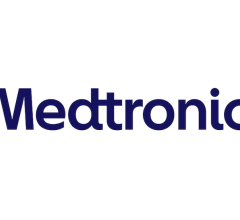
October 24, 2016 — Medtronic received U.S. Food and Drug Administration (FDA) 510(k) clearance for the HawkOne Directional Atherectomy System in a new size for treating patients with peripheral artery disease (PAD). The HawkOne system is designed to remove plaque from the vessel wall and restore blood flow. The new HawkOne 6 French (6F) provides an effective and easy-to-use treatment option for patients with PAD both above and below the knee with a single device at a lower profile.
PAD is a serious, chronic condition that affects more than 200 million people worldwide[1] and 12 million in the United States.[2] In PAD, arteries in the legs become narrowed or blocked by plaque. This narrowing of the blood vessel can cause reduced blood flow to the leg, which can result in severe pain and limit physical mobility. When blocked arteries are below the knee, they are more likely to be calcified, and linked to lower treatment success.[3] Patients with blocked arteries below the knee may also develop the most severe form of PAD, critical limb ischemia (CLI), which can result in non-healing leg ulcers and increased risk of amputation.[4,5]
"Considering the complex disease pattern seen in below-the-knee PAD, traditional treatment options such as placement of permanent stents or treatment with a balloon, may not be ideal for achieving long-term results. Directional atherectomy, on the other hand, is an established intervention that not only restores patency but also maximizes luminal gain while keeping future treatment options open," said Brian DeRubertis, M.D., associate professor of surgery at the David Geffen School of Medicine at UCLA. "The new, smaller HawkOne 6F device further adds to the versatility of this directional atherectomy system and enables us to treat a larger set of patients with more complex lesions, including patients with challenging calcified lesions."
The HawkOne 6F size is an advanced option to treat patients with multi-level PAD both above and below the knee, addressing lesions of various length, morphology, and location.
Key benefits of the system include:
• Treating calcified lesions: The HawkOne system enables physicians to treat severe calcified lesions more efficiently with no increase in cut depth. The system can treat calcified lesions up to two times more effectively than the TurboHawk(TM)device.6
• Ease of use: The HawkOne system has a preloaded flush tool, which improves cleaning time by up to 55 percent when compared to the TurboHawk high efficiency cutter.7 The 6F size is also designed to simplify device selection and provide easy set-up with no capital equipment.
"The expansion of our HawkOne system provides physicians with more options to optimize directional atherectomy as an approach to PAD management, particularly for lesions below the knee," said Mark Pacyna, vice president and general manager of the Peripheral business, which is part of the aortic and peripheral vascular division at Medtronic. "The HawkOne 6F clearance, as well as the recent approval of our 150 mm length In.Pact Admiral drug-coated balloon and clearance of the Trailblazer angled support catheter, reflects our commitment to a full portfolio of products to meet the needs of patients and physicians."
In collaboration with leading clinicians, researchers, and scientists worldwide, Medtronic offers the broadest range of innovative medical technology for the interventional and surgical treatment of cardiovascular disease and cardiac arrhythmias. The company strives to offer products and services that deliver clinical and economic value to healthcare consumers and providers around the world.
The new 6F HawkOne expands Medtronic's directional atherectomy portfolio, which also includes the TurboHawk and SilverHawk systems and is backed by more than 15 peer-reviewed studies.8 These include DEFINITIVE LE, the largest independently-adjudicated study of an atherectomy procedure ever conducted, and DEFINITIVE AR, a pilot study, and the first randomized look into the effects of preparing a vessel with directional atherectomy followed by treatment with a drug-coated balloon (DCB).
Results from DEFINITIVE LE demonstrated 95 percent limb salvage in patients with critical limb ischemia (CLI) and 78 percent overall patency in claudicant patients 12 months post treatment.[9] A subset analysis of DEFINITIVE LE in claudicant patients with infrapopliteal disease observed 12-month patency rates of approximately 90 percent.[9] Both DEFINITIVE LE and DEFINITIVE AR showed low dissection and provisional stent rates when patients were treated with directional atherectomy.[10]
For more information: www.medtronic.com
References:
1. Fowkes, F. G., et al. (2013). Lancet 382(9901): 1329-1340.
2. Goodney, P. P., et al. (2015). JAMA Surg 150(1): 84-86.
3. Roberts, D., et al. (2014). Catheter Cardiovasc Interv 84(2): 236-244.
4. Dua, A. and C. J. Lee. (2016). Tech Vasc Interv Radiol 19(2): 91-95.
5. Liistro, F., et al. (2013). Circulation 128(6): 615-621.
6. Medtronic data on file.
7. Medtronic data on file.
8. Medtronic data on file.
9. McKinsey, J. F., et al. (2014). JACC Cardiovasc Interv 7(8): 923-933.
10. Zeller, T. (2014). DEFINITIVE AR, VIVA 14.


 November 08, 2024
November 08, 2024 








